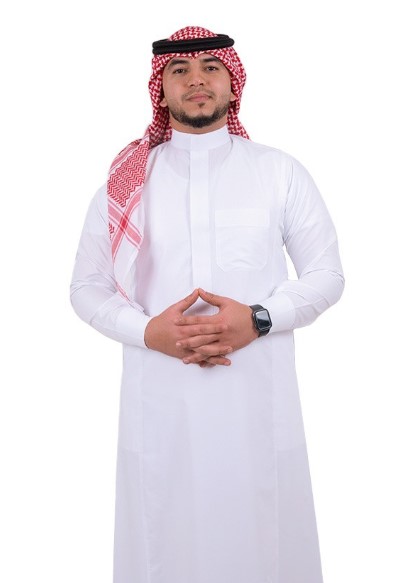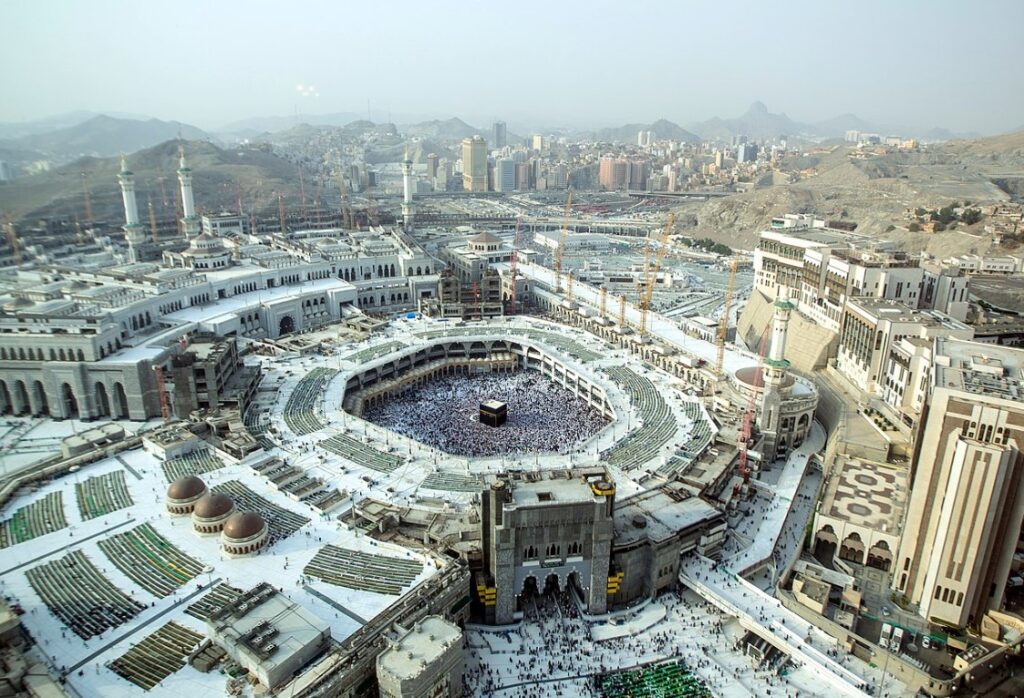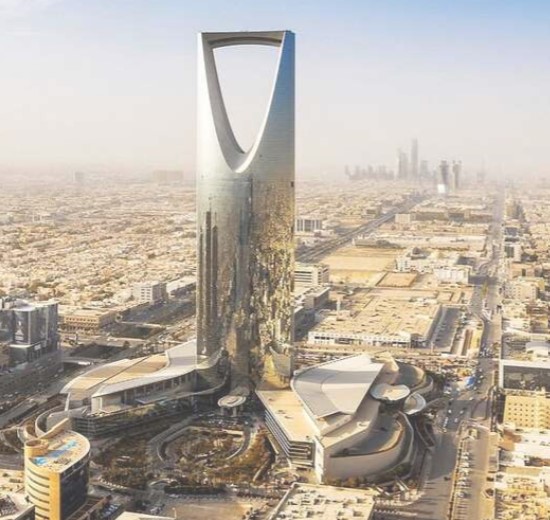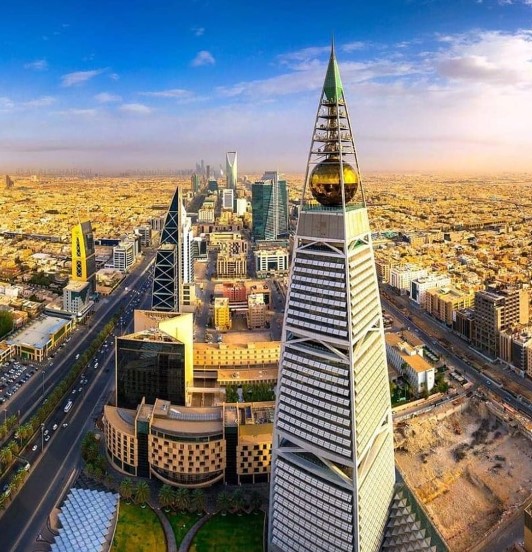The Kingdom of Saudi Arabia occupies most of the Arabian Peninsula and is most famous for its oil and the fact that 85+% of the population worship the ultraconservative form of Sunni Islam.

Because of this there are some fairly strict rules in place, particularly when it comes to dress standards. Local laws require both men and women to dress modestly covering shoulders and knees in public. They should also avoid tight-fitting clothing or clothes with rude language or images.

Most men still tend to wear the traditional Saudi Arabian dress (Thobe) on a daily basis.
This is a long flowing (mainly white) robe and a ghutra (a white or red and white checked headdress, held in place by a double black cord known as an iqal.
For me it meant in extreme heat I had to wear long pants and a long sleeved shirt the whole time.
Since 2019, it is no longer mandatory for female travellers to wear the traditional robe or abaya (a loose-fitting, long robe that covers the entire body save for the face, hands, and feet) and veil. This eased the pressure on Jill to fully cover up (although she had already bought the scarf just in case).

Saudi Arabia is bordered by the Red Sea (west), Jordan, Iraq, and Kuwait (north), the Persian Gulf, Qatar and the United Arab Emirates (east), Yemen (south), and Oman (southeast). It has the third most valuable natural resource reserves in the world (petroleum and natural gas) making it one of the top twenty economies in the world.

The country is home to Mecca, Islam’s holiest city and the birthplace of the Prophet Muhammad. Mecca is 70 km inland from the Red Sea, in a narrow valley 277 with a population of around 1.5 million.
The first thing that strikes you about the place is (obviously) the heat. We got off our plane in Riyadh at 3 am to be greeted by 31 degrees. Jill had arranged with the hotel for a driver to pick us up which took away any potential airport drama (specifically the money exchange and taxis) in the middle of the night.
The second thing to hit you is that at that time of the morning the place is busy. Not just the airport, but the whole place. I guess as a symptom of debilitating heat during the day the work pattern has shifted and the evening and early morning hours are where stuff gets done.
Given our early arrival off the flight and 3:45 arrival at the hotel it took another 45 minutes to wind down before we could sleep. We set an alarm for a few hours later so we could get up for breakfast, and then went back to sleep. Avoiding the heat of the day at all costs (in reality everything is quiet during the heat) we hid in our room until after dark before heading out for dinner.
Stepping out of our hotel at 7:15 pm we were punched in the face with a 38 degree hot wind. Clearly, our decision to avoid the afternoon heat had been a good one. A check of temperatures later on when we got home showed that 46 was on the cards but the wind (breeze) kept it down to 44.
Riyadh

Riyadh is the capital of Saudi Arabia and is the main financial hub. It sits on a desert plateau in the centre of the country and is home to almost 7.7 million people. The physical layout was designed and structured to be uniform with 2km x 2km city blocks running along a north/south and east/west axis. Within this grid are more than 4,000 mosques and numerous busy (air-conditioned) shopping centres.
The next thing that hits you is the sheer size of everything. All the roads from the airport to town were a minimum of 3 lanes and up to 8 in parts. Add to this the buildings that you drive past that are all very large and imposing.

Our hotel choice was almost perfect. It was the little cheapie (comparatively) on Olaya Street, directly across the road from the Kingdom Centre (RHS of this picture).
The Kingdom Center is one of the city’s major tourist icons.
It is a 99-storey skyscraper that was built in 2002 making it the tallest building in the country. As you would expect, it has been surpassed several times since then. The building features a 300 meter high sky bridge that connects the 2 towers. And of course, of an evening the lights cycle through a range of colours changing the appearance every 20 seconds or so.



Once you have paid your entrance fee there are two lifts needed to get to the bridge. The first will take you to the 77th floor, and then another to the 99th. Arriving at the 99th floor you immediately come out onto the skybridge with amazing views north and south. And if you are super keen you can lean over and get a photo looking down.




Dinner at the Kingdom Centre was a failure (something that became commonplace in our time in Saudi Arabia) and ended up being an overpriced, bland meal from a shopping centre food court. In fact all of the meals that we had in Saudi Arabia were fails, with the exception of the hotel breakfasts.
We had high hopes for the food but each attempt failed. It was virtually impossible to find a restaurant (other than chain store junk food). Maybe home cooking is the go, maybe we were just in the wrong spot. But our culinary exposure in Saudi Arabia was less than stellar.
The next day we once again hid from the heat of the day, not venturing out until 5 pm. As we walked out of the air-conditioned hotel we were once again hit with 41 degrees while we waited for our Uber to take us to the historical Deira district. The aim of the journey was to visit the Masmak Fort and its museum.






The fort was built in 1865 and is made almost entirely out of wood, straw and mud. The fort is made up of six distinct parts: the gate, the mosque, the majlis (sitting room), the well, the towers and the courtyard.






Just like the building opposite us, after dark they light up the fort in a rotating set of colours too.





Along the way, you do pass some fairly interesting buildings and architecture. Some of these include the King Abdulaziz Center for World Culture, the National museum, the Al Murabba Palace Museum, and the Al Rajhi Grand mosque. But these tend to all look and feel the same. They are all 2-5 storey, yellowish, sandstone blocks (which seem to be pretty much everywhere in town.



Who would have thought that in the middle of a desert, there would be sand, sandstone and yellow-coloured buildings? The broad, flat, low profile of the buildings probably relates mainly on the base (sand) that they are built upon. This is all very logical and sensible, but in terms of visual appeal, it is all very much the same.
The amazing thing to us was the traffic. With 3-8 lanes of traffic available everywhere, it was almost always in gridlock.
It took us about 40 minutes to travel the 12 km to the fort and about the same to get back. The next day (while hiding from the heat and looking out the window) it was considerably worse (and this was Sunday afternoon).

The car is king here, there is virtually no such thing as public transport (but there is a plan). The “King Abdulaziz Project for Riyadh Public Transport” is underway to develop and deliver a public transport network (metro and buses) that will eventually move 3.6 million passengers daily. The finished product is supposed to have: 6 metro lines (with 84 stations), 180 bus routes (with 2860 stops and 842 buses).



But, today there are no metro lines and only 24 of the proposed 180 bus routes are in operation. There is no cycling (that we have seen) and in the heat, the pedestrian traffic is virtually non-existent. So you drive, take an Uber or taxi or stay put. An all of this in a city of over 7 and a half million people.
Needless to say, this level of automobile use comes with a pollution issue. The place is shrouded in a constant haze. This was a real surprise to me, as I expected clear desert skies and not a constant smog film. This obviously wreaks havoc on our photographs.
At the other end of our little strip of road you will find the Faisaliyah Tower. This and the Kingdom Centre kind of bookend this strip of Riyadh. I have seen them described as the bottle opener (Kingdom Centre) and the Pointy one.

Faisaliyah Tower (also called the star dome) is at the other end of the strip and was the first high-rise built in Saudi Arabia.
The round bit at the top is a three storey, fine dining, restaurant called “The Globe” that offers 360 degree views of the city.
As you would expect, the Globe is one of the most sought-after restaurants in Riyadh, with a price tag to match. The website dictates a minimum consumption of SAR 288 (about $120 aussie) per person. This doesn’t seem ridiculously steep, but when you look at the menu, finding something that cheap may be a challenge. The cheapest tasting menu starts at $170 and the 7 course kicks in at $320, each.
For what is on offer the numbers are not crazy, but sadly they were outside of our budget (photos from their Facebook page).





The edge of the world is the name of the 1,131 m height cliff that lies about 100 km from Riyadh. It sits at the end of the 800 km Tuwaik Mountain range. Given its distance from town, the expense of tours, the warnings about remoteness and the major hike required to get here we did not even entertain going.


The one thing that absolutely disgusted me was the attitude of the Saudis (predominately the men). There was an overwhelming sense of arrogance and entitlement that the rules did not apply to them. We were treated fantastically at every interaction. But we witnessed some of the most atrocious behaviour and treatment of others that we had ever seen.
Example 1: While leaving the country we were waiting in the airport line to check in and get our boarding passes when a 13 (ish) year old Saudi boy was verbally abusing, talking down to and berating a porter (non-Saudi adult). This immediately rubbed me up the wrong way and if he had tried talking to me that way the would have received quite the attitude adjustment.
Example 2: On the plane, we were seated in row 2 directly behind business class. One person was in row 1 (who had clearly paid extra) but the Saudi man (about 50) opposite us berated and was rude to the flight attendants because he was not allowed to sit there. When she explained that the other guy had paid for the privilege this was not a good enough answer and pointed to his outfit and claimed that this should override the lack of paying for the business class seat.
Example 3: On the next flight we were further back the plane when a Saudi Male (about 25) reclined his seat while still at the gate. The flight attendant asked him to put his seat back up and he objected. She pushed the button and sat him upright. As soon as she turned he reclined. She saw this and sat him upright again. This pattern recurred a further 12+ times until she finally just gave up.
Example 4: On every one of these flights, after the don’t use your phones announcement Saudis (both male and female) kept talking on their phones right through the takeoff and landings.
Saudi Arabia itself was okay, but for the most part, we were unable (or unwilling) to get out and about to see the sights due to the heat and poor transportation system. So this meant that much of our time here was spent waiting around the hotel room for a time that was suitable to go out and explore.
In reality, this is probably our failure in not resetting our travel patterns appropriately. The people were lovely to us, but had an overwhelming demeanor that the rules just did not apply to them. While we can now say that we have been and spent some time here, I probably would not put this on the comeback list.